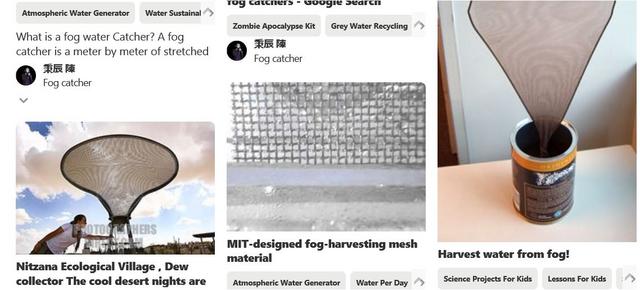Chris Kott wrote:Brilliant.
If something needs to be Rube Goldbergy for it to be cheap to construct and operate, so be it. It well may be that it only appears to be so, and that the complexity actually is necessary.
I think that drawing water from low-humidity air is one of the best foci for grid-independent sustainable energy sources. If that can be accomplished, it would be possible to have drip irrigation for individual trees, or lines of trees, for establishment in areas that will sustain them once established, and which will be slowly humidified and greened as a result.
I think that the ability of some solar panel setups to produce drinking water as a byproduct of electricity production is brilliant, too, and if that were coupled with intensive pasture upgrading and rotational grazing, even the harshest conditions could be made, well, pastoral, due to the added water and shade from the panels, and grazing between and underneath increasing the nutrient cycling and soil generation.
Incidentally, I would envision the cool, dry air doing really well in a cool dehydrator. You're already talking about it being a low-humidity environment. A cold dessicator that preserves heat-sensitive compounds in fruit, veggies, and herbs might be really useful.
Spencer, this type of innovation is critical, in my opinion. Please keep us posted. Good work, and good luck.
-CK
I very much appreciate your words. Not to be too -- existential -- my particular brand of scholarship has not really precipitated much in the way of encouragement: normally half-hearted derision.
By way of addressing the points you have raised, I have done preliminary work in the use of a solid desiccant (granulated calco-silica-carbon) placed in an evacuated
solar tube. I would then use an RV venturi vent (they're neat - the vent can rotate into the wind, and the wind blowing through creates vacuum within the black-water tank vent line) as a means of creating a draft through the system with ambient wind. The venturi ideally draws atmosphere through the desiccant so as to saturate it. When the sun rises (humidity is highest just before sunrise) the solar tube then heats precipitating two reactions: the chamber temperature activates a "wax-motor" valve (paraffin based thermostatic valve like the one in your car, but different temperature) and this valve closes the intake of the atmosphere and creates a minor pressure drop in the system should the wind continue. The second reaction is the desorption of the water from the desiccant.
The atmosphere ducting leading to the venturi passes through an earth-cooled condenser coil with a catch basin. The minor pressure drop created by the venturi working against the closed valve slightly lowers the desorption temperature of the desiccant and thusly the "air" produced during the desorption cycle is much more humid - until the desiccant is dried out and ready for the next adsorption cycle.
The net result of this system is a rather simplified device that operates directly on ambient wind and solar energy, without any conversion losses (no electricity), one single moving part (paraffin wax expanding as it heats, contracting as it cools), and provides small amounts of pure water dependent upon ambient humidity.
It's a glass and plastic thing, say 8 feet tall and 3 inches wide - and the best part? I would like to stick it right in a
raised bed planter. It's job is to make a little moist zone around the
roots of the plant. Yeah - a true "Self-Watering" planter.
Additionally, my work in the wet-desiccant system leads me to believe that the working fluid may serve double duty as the electrolyte in a rechargeable chloride battery. In this scheme, it would be a wind/solar recharged battery that happens to produce water as a byproduct. That one gets me really excited as, frankly, the materials involved, while not inert, are totally within the capability of nature to handle without any trouble at all - they're actually nutrients after a single bio-process.
Carbon, manganese, calcium, and chlorine.
So, what is stopping me?? What slows my work?
I fund my research with my Visa card and, not to be too whiny: it is precarious and slow.
End of the day, if you're inclined I could very much use assistance in getting parts.
The water-systems, and the adjunct battery cell are within the
class of work that I have decided I will not patent. I have no trouble sharing the theory and design and, when I have completed a functional apparatus, I will publish it for public consumption. Free to any manufacturer or DIYer who wants.
Maybe I can build and
sell some, but the design itself is too important for me to hide with IP protections.
Have you any way (social media,
Patreon, etc...) to help??
My website is www DOT TributaryHouse DOT com.
Spencer

 3
3




![Filename: 0.jpg
Description: [Thumbnail for 0.jpg]](/t/100785/a/70607/0.jpg)



























